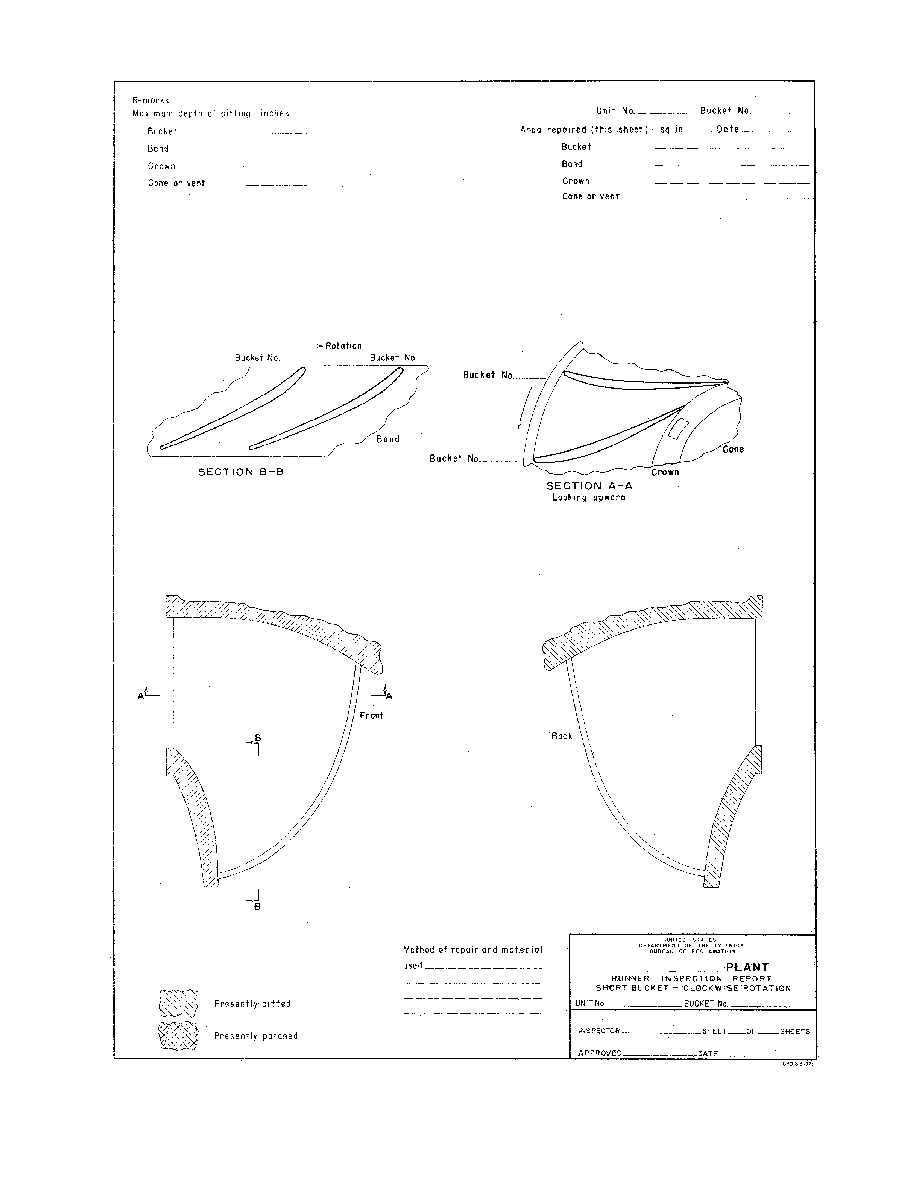

periphery and the discharge ring. It is important that the anti-cavitation fin not
extend too far into this area so as to disrupt the flow patterns across the runner.
extend too far into this area so as to disrupt the flow patterns across the runner.
"Air Injection
"Injection of air into the runner area either by natural aspiration or using low pressure
compressors (blowers) is a possible method of reducing cavitation damage. The
benefits of air injection, however, are somewhat questionable; and this approach
should be discussed with the turbine manufacturer. Large quantities of air could
reduce efficiency. Most successful use of air injection to reduce cavitation damage has
been reported on propeller turbines.
compressors (blowers) is a possible method of reducing cavitation damage. The
benefits of air injection, however, are somewhat questionable; and this approach
should be discussed with the turbine manufacturer. Large quantities of air could
reduce efficiency. Most successful use of air injection to reduce cavitation damage has
been reported on propeller turbines.
4.8 "PERSONNEL FOR CAVITATION PITTING REPAIRS
"While there are several alternatives available for the actual repair process, the use
of in-house personnel is usually preferable to work done by an outside contractor. An
in-house team will usually be more dedicated to achieving a "perfect" repair
particularly if the same personnel are to be involved in subsequent repair work.
Outside contractors will be necessary when in-house personnel are fully committed
to other maintenance tasks or because the repair work is too extensive to be handled
by available personnel.
of in-house personnel is usually preferable to work done by an outside contractor. An
in-house team will usually be more dedicated to achieving a "perfect" repair
particularly if the same personnel are to be involved in subsequent repair work.
Outside contractors will be necessary when in-house personnel are fully committed
to other maintenance tasks or because the repair work is too extensive to be handled
by available personnel.
"The supervising engineer must be thoroughly familiar with causes of cavitation pitting
and of repair methods and procedures, and should have carefully followed the history
of the turbine repair over a number of years. It is also preferable that the same
welders and grinders work on the unit during each repair to maintain continuity.
and of repair methods and procedures, and should have carefully followed the history
of the turbine repair over a number of years. It is also preferable that the same
welders and grinders work on the unit during each repair to maintain continuity.
"Specific instructions should be given to the repair crew as to what work is to be done,
and efforts should be made to ensure that personnel work as a unified 'team.' The
extent and methods of repair must be clearly defined. Excessive carbon-air gouging
will add to the amount of weld which must be placed, increasing cost, time and
potential for blade distortion. Application of excess weld will significantly increase
grinding time.
and efforts should be made to ensure that personnel work as a unified 'team.' The
extent and methods of repair must be clearly defined. Excessive carbon-air gouging
will add to the amount of weld which must be placed, increasing cost, time and
potential for blade distortion. Application of excess weld will significantly increase
grinding time.
"Time should be taken to explain to the repair crew the causes of cavitation pitting on
the unit which they are repairing; this will lead to increased care in the finished work.
Also, suggestions from the repair personnel should not be ignored.
the unit which they are repairing; this will lead to increased care in the finished work.
Also, suggestions from the repair personnel should not be ignored.
"The number of repair personnel will depend on the size of unit, the extent of repair,
the criticality of returning the unit to service, and the availability of repair personnel.
Grinding time is generally slightly longer than the actual weld time. Usually four
the criticality of returning the unit to service, and the availability of repair personnel.
Grinding time is generally slightly longer than the actual weld time. Usually four
27